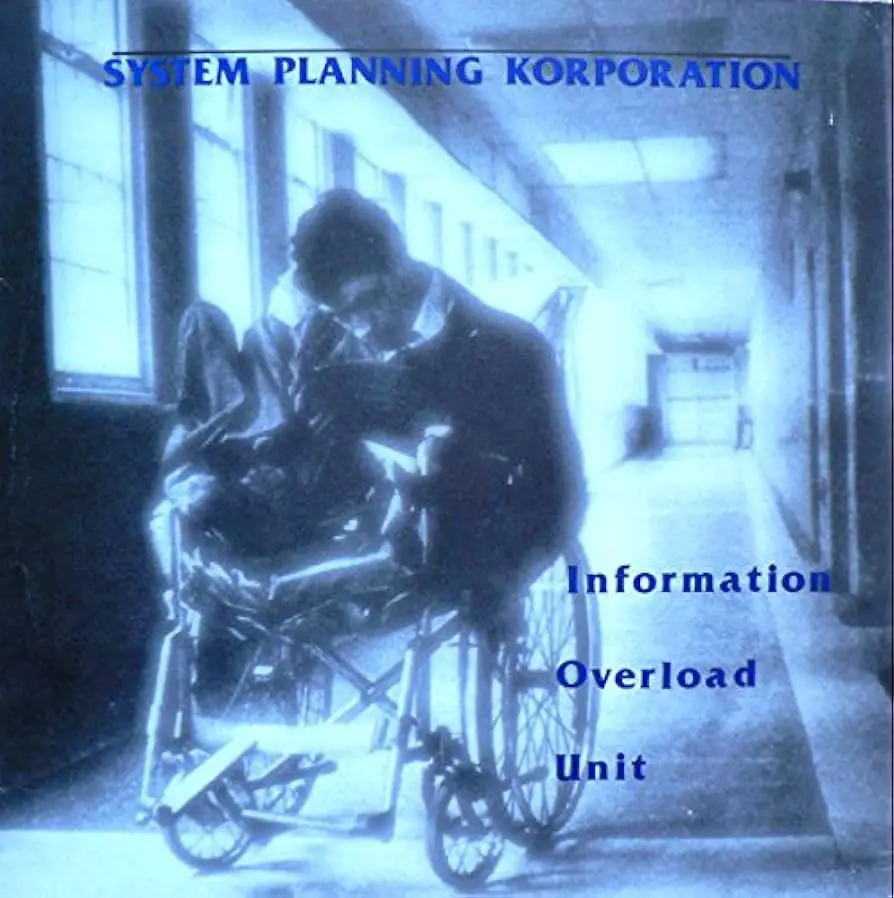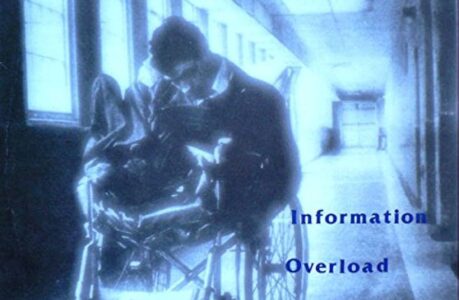Introduction
In the annals of experimental music, few bands have left as indelible a mark as SPK. With their groundbreaking fusion of industrial noise, post-punk, and avant-garde sensibilities, SPK carved a path that challenged conventional musical norms. This essay delves deep into the enigmatic world of SPK, tracing their history, elucidating their unique sonic palette, and examining their profound influence on the musical landscape.
History and Development
SPK, an acronym for “Sozialistisches Patientenkollektiv” or “Socialist Patients’ Collective,” emerged in 1978 from the fertile underground scene of Australia. Founded by musician Graeme Revell, the collective initially functioned as an art group focused on exploring the intersection of psychiatry and politics. However, Revell’s vision quickly expanded beyond the confines of visual art, leading SPK into the realm of music. Drawing inspiration from the burgeoning industrial music scene in Europe, SPK embarked on a sonic journey that would challenge perceptions and redefine the boundaries of music itself.
Type of Music
SPK’s music defies easy categorization, existing at the intersection of noise, industrial, and avant-garde experimentation. At its core, SPK’s sound is characterized by a relentless assault on the senses, incorporating elements of dissonance, distortion, and discordance. Their compositions often eschew traditional song structures in favor of immersive sonic landscapes, evoking a sense of existential unease and primal urgency. Utilizing an array of unconventional instruments, electronic manipulation, and found sounds, SPK crafted a sonic palette that was as visceral as it was confrontational. Their music served as a mirror reflecting the darker aspects of the human psyche, challenging listeners to confront their deepest fears and anxieties.
Key Personnel
While Graeme Revell served as the driving force behind SPK, the band’s lineup underwent several iterations throughout its existence. Other notable members included Neil Hill, Danny Rumour, and Sinan Leong, each contributing their unique talents to the band’s sonic tapestry. Despite these changes, Revell remained the creative linchpin of SPK, guiding the collective through various sonic evolutions and conceptual explorations.
Essential Albums
“Information Overload Unit” (1981)
One of SPK’s seminal works, “Information Overload Unit,” stands as a testament to the band’s uncompromising vision and sonic experimentation. From the frenetic energy of tracks like “Leichenschrei” to the haunting atmospherics of “Retard,” the album showcases SPK at the height of their creative powers. “Information Overload Unit” remains a landmark release in the annals of industrial music, influencing countless artists across various genres.
“Machine Age Voodoo” (1984)
“Machine Age Voodoo” sees SPK delving deeper into industrial territory, exploring themes of technology, alienation, and dystopia. Tracks like “Metal Dance” and “In Flagrante Delicto” pulsate with a primal energy, serving as a sonic manifesto for the post-industrial age. The album’s fusion of abrasive noise, hypnotic rhythms, and haunting atmospheres solidifies its status as an essential listen for fans of experimental music.
“Leichenschrei” (1982)
“Leichenschrei,” SPK’s second studio album, stands as a seminal work in the realm of industrial music. Released in 1982, the album showcases SPK at the height of their creative powers, blending elements of noise, electronic experimentation, and avant-garde sensibilities. Tracks like “In the Dying Moments” and “Slogun” epitomize SPK’s confrontational approach to music, serving as sonic manifestos for the dispossessed and disenfranchised.
“Zamia Lehmanni: Songs of Byzantine Flowers” (1986)
“Zamia Lehmanni: Songs of Byzantine Flowers” sees SPK exploring new sonic territories, incorporating elements of world music, ritualistic percussion, and ethereal atmospheres. The album’s title track, “Zamia Lehmanni,” evokes a sense of mysticism and transcendence, with its hypnotic rhythms and haunting melodies. “Zamia Lehmanni” represents a departure from SPK’s earlier work, embracing a more introspective and atmospheric sound.
“Despair” (1984)
“Despair,” SPK’s third studio album, delves deeper into themes of alienation, decay, and societal collapse. Tracks like “Napalm” and “Wound” pulsate with a primal energy, channeling the collective angst and disillusionment of a generation. “Despair” serves as a sonic exploration of the darker aspects of the human condition, challenging listeners to confront their deepest fears and anxieties.
Essential Tracks
“Slogan” (1983)
“Slogan” encapsulates SPK’s confrontational approach to music, with its relentless barrage of noise and distorted vocals. The track’s frenzied intensity remains a testament to the band’s uncompromising vision and their ability to provoke a visceral reaction in listeners. “Slogan” stands as a sonic manifesto for the dispossessed and disenfranchised, channeling the collective rage and disillusionment of a generation.
“Emanation Machine R. Gie” (1979)
One of SPK’s earliest recordings, “Emanation Machine R. Gie” exemplifies their experimental ethos and their willingness to challenge conventional musical norms. Combining found sounds with primitive electronics, the track creates a haunting sonic landscape that blurs the boundaries between music and noise. “Emanation Machine R. Gie” serves as a testament to SPK’s avant-garde sensibilities and their commitment to pushing the boundaries of sonic experimentation.
“Metal Field” (1984)
“Metal Field” exemplifies SPK’s confrontational approach to music, with its relentless barrage of noise and industrial rhythms. The track’s frenetic energy and abrasive textures serve as a sonic assault on the senses, leaving an indelible impression on listeners. “Metal Field” stands as a testament to SPK’s uncompromising vision and their ability to provoke a visceral reaction in audiences.
“Invocation” (1981)
“Invocation,” a standout track from SPK’s debut album “Information Overload Unit,” evokes a sense of ritualistic intensity and primal urgency. The track’s hypnotic rhythms and haunting atmospheres create a sense of unease and disquiet, immersing listeners in a sonic landscape of existential dread. “Invocation” serves as a sonic invocation of the darker aspects of the human psyche, challenging listeners to confront their deepest fears and anxieties.
Legacy and Significant Reviews
SPK’s influence extends far beyond their own musical output, permeating the realms of industrial, experimental, and electronic music. Critics have lauded SPK for their fearless exploration of taboo subjects and their ability to evoke a sense of existential dread through their music. Their pioneering use of sampling, electronic manipulation, and industrial noise laid the groundwork for genres such as industrial rock and power electronics. Despite their relatively brief existence, SPK’s impact on the musical landscape continues to reverberate, inspiring generations of artists to embrace experimentation and embrace the darker aspects of the human condition.
Similar Bands
Throbbing Gristle
As pioneers of the industrial music genre, Throbbing Gristle shares many similarities with SPK. Both bands pushed the boundaries of conventional music, incorporating elements of noise, performance art, and avant-garde aesthetics into their work. Throbbing Gristle’s confrontational approach to music and their willingness to tackle taboo subjects mirror SPK’s own ethos, cementing their status as kindred spirits in the realm of experimental music.
Einstürzende Neubauten
Einstürzende Neubauten, known for their use of found objects as instruments, drew inspiration from SPK’s experimental approach to music. Both bands eschewed traditional song structures in favor of sonic experimentation, creating immersive sonic landscapes that challenged listeners’ perceptions of music. Einstürzende Neubauten’s willingness to embrace unconventional sound sources and their penchant for sonic exploration echo SPK’s own avant-garde sensibilities, forging a connection between the two bands that transcends genre boundaries.
Coil
Coil, led by the enigmatic Peter Christopherson, shared SPK’s fascination with the darker aspects of human existence. Their use of sampling, electronic manipulation, and atmospheric soundscapes mirrored SPK’s own sonic explorations, creating a sense of unease and disquiet in listeners. Coil’s willingness to embrace experimentation and their commitment to pushing the boundaries of sonic expression align with SPK’s own ethos, solidifying their status as kindred spirits in the realm of experimental music.
Post-SPK Activities
Graeme Revell
After the dissolution of SPK, Graeme Revell embarked on a successful career as a composer for film and television. He gained recognition for his work on soundtracks for movies such as “The Crow,” “Sin City,” and “The Chronicles of Riddick.” Revell’s compositions often blend electronic and orchestral elements, creating atmospheric and immersive scores.
Neil Hill
Neil Hill, a founding member of SPK, continued to explore experimental music after the band’s breakup. He collaborated with various artists and released solo works under different aliases. Hill’s post-SPK output remains characterized by its avant-garde sensibilities and sonic experimentation.
Danny Rumour
Danny Rumour, known for his contributions to SPK’s later albums, remained active in the music scene following the band’s dissolution. He collaborated with other artists and bands, exploring diverse musical styles ranging from industrial to alternative rock. Rumour’s eclectic approach to music reflects his continued commitment to creative exploration.
Sinan Leong
Sinan Leong, who joined SPK during its later years, pursued a career in visual arts after the band’s breakup. She experimented with various mediums, including painting, sculpture, and multimedia installations. Leong’s work often explores themes of identity, memory, and perception, reflecting her diverse artistic interests and influences.
Other Members
Several other members of SPK went on to pursue diverse creative endeavors in music, visual arts, and other fields. While their post-SPK activities may vary, they all share a common legacy of innovation and experimentation fostered during their time with the band.
Legacy
Although SPK disbanded in the late 1980s, their legacy continues to influence artists across various genres. Their pioneering blend of industrial noise, avant-garde experimentation, and thematic exploration laid the groundwork for subsequent generations of musicians and artists. SPK’s uncompromising vision and fearless exploration of taboo subjects remain a testament to the enduring power of experimental music.
SPK Discography
Albums
1. “Information Overload Unit” (1981)
- Description: SPK’s debut studio album, “Information Overload Unit,” is a seminal work in the industrial music genre. Characterized by abrasive noise, pulsating rhythms, and haunting atmospheres, the album challenges conventional musical norms and explores themes of societal decay and alienation.
2. “Leichenschrei” (1982)
- Description: “Leichenschrei” represents a further exploration of SPK’s industrial sound, delving deeper into themes of existential dread and primal urgency. Tracks like “Slogun” and “In the Dying Moments” epitomize SPK’s confrontational approach to music, serving as sonic manifestos for the dispossessed and disenfranchised.
3. “Despair” (1984)
- Description: “Despair” sees SPK embracing a more atmospheric and introspective sound, exploring themes of societal collapse and decay. Tracks like “Napalm” and “Wound” pulsate with a primal energy, channeling the collective angst and disillusionment of a generation.
4. “Machine Age Voodoo” (1984)
- Description: “Machine Age Voodoo” marks a departure from SPK’s earlier work, incorporating elements of world music, ritualistic percussion, and ethereal atmospheres. The album’s hypnotic rhythms and haunting melodies evoke a sense of mysticism and transcendence, expanding SPK’s sonic palette beyond the confines of industrial music.
5. “Zamia Lehmanni: Songs of Byzantine Flowers” (1986)
- Description: “Zamia Lehmanni: Songs of Byzantine Flowers” represents a further evolution of SPK’s sound, incorporating elements of ambient and experimental music. The album’s title track, “Zamia Lehmanni,” explores themes of spirituality and transcendence, creating a sonic landscape that is both immersive and introspective.
Singles/EPs
1. “Emanation Machine R. Gie” (1979)
- Description: “Emanation Machine R. Gie” is one of SPK’s earliest recordings, exemplifying their experimental ethos and their willingness to challenge conventional musical norms. The track combines found sounds with primitive electronics to create a haunting sonic landscape that blurs the boundaries between music and noise.
2. “Contact” (1983)
- Description: “Contact” showcases SPK’s confrontational approach to music, with its relentless barrage of noise and distorted vocals. The track’s frenzied intensity serves as a sonic manifesto for the dispossessed and disenfranchised, channeling the collective rage and disillusionment of a generation.
3. “Factory” (1984)
- Description: “Factory” delves into themes of industrialization and alienation, exploring the dehumanizing effects of modern technology. The track’s pulsating rhythms and abrasive textures create a sense of urgency and unease, serving as a sonic critique of contemporary society.
4. “In Flagrante Delicto” (1984)
- Description: “In Flagrante Delicto” is a sonic exploration of desire and depravity, combining elements of industrial noise and electronic manipulation. The track’s hypnotic rhythms and haunting atmospheres evoke a sense of existential dread and primal urgency, challenging listeners to confront their deepest fears and anxieties.
5. “Necropolis” (1987)
- Description: “Necropolis” serves as a sonic invocation of death and decay, exploring themes of mortality and transcendence. The track’s haunting melodies and atmospheric soundscapes create a sense of unease and disquiet, immersing listeners in a sonic landscape of existential dread.

